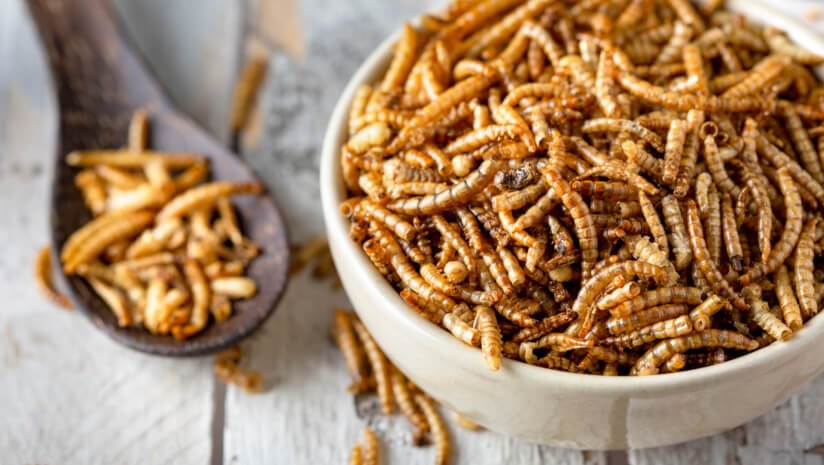Patents for new insect protein products dipped a further 1.5% globally this year – down four to 251, though relatively flat compared to a 13% drop in the previous period from 293.
A slower than expected adoption into western diets, along with reduced innovation and R&D are to blame for the decline, according to Appleyard Lees’ Inside Green Innovation Progress Report.
“While consumer appetites continue to challenge the adoption of insect-derived protein for human consumption in some regions, insect farming may help to improve the environmental impact of human food systems in other ways,” says Appleyard Lees’ senior associate professor James Myatt.
Register to attend the free digital Protein Vision event
Insect protein production can help to reduce the carbon footprint of animal farming through incorporating insect and insect-derived products into animal feed to replace less sustainable protein sources, he explains.
There is also scope for insect-derived products to further grow in the agriculture space, with innovation in insect waste (frass) for fertiliser showing an uptick in patent applications to an all-time high, according to the report.
While the west has still yet to adopt insect proteins into more areas of food and drink production, South Korea has increased activity, “likely fuelled by the country’s growing interest in meat substitutes”, said the report.
South Korea filed 102 patents for insect proteins in 2022, double that of its nearest rival, Europe, at 44. Russia and Indonesia had also recorded all-time highs for new priority applications.
Countries using insects as protein the most
The Republic of Korea Rural Development Administration filed the highest number of patents, with applications for feed compositions for breeding caterpillar larvae and the treatment of muscular atrophy using mealworm larvae extract, said the report.
Additional filings including those for the use of black soldier fly in hen and cattle feed to fortify milk and eggs.
“Whatever the reason for the overall slowdown in patent filings for insect protein, there appears to [be] plenty of ambition among the sector’s leaders,” said Appleyard Lees partner Chris Mason.
Meanwhile, the same report showed plant-based patents were down 50% among some of the biggest global food and drink brands.



